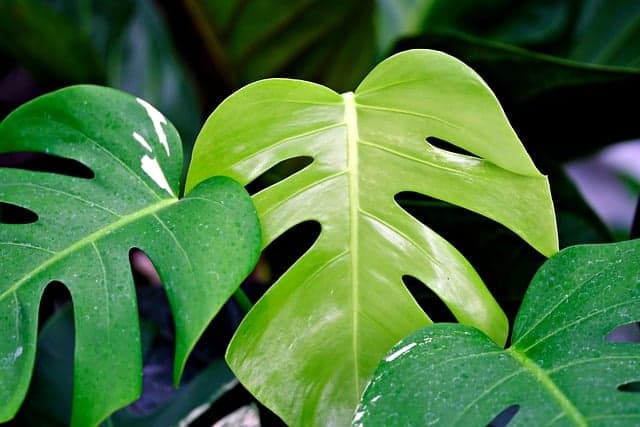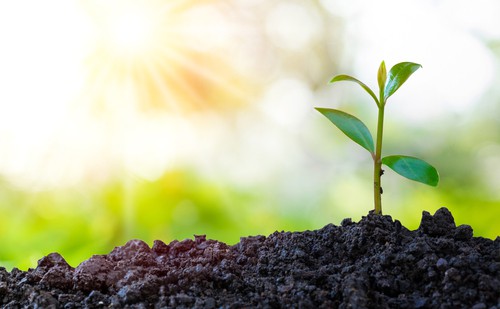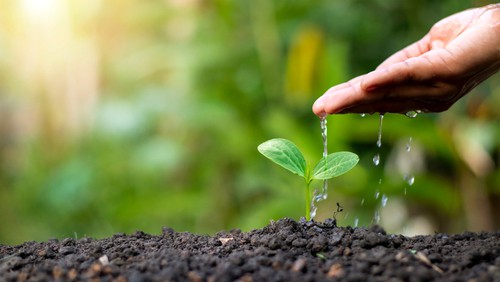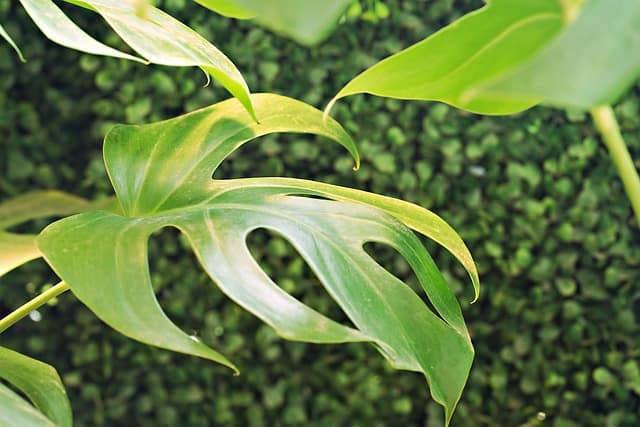Monstera plants are beloved by many houseplant enthusiasts for their large and unique leaves. However, brown spots on the back of Monstera leaves can be a common problem that can negatively affect the plant’s health and appearance.
These spots can be caused by a variety of factors, including improper watering, pests, diseases, and environmental factors.
Understanding the causes of brown spots on back of Monstera leaves is crucial in preventing and treating the issue. Proper Monstera plant care, including watering and soil requirements, can help prevent brown spots from forming.
Additionally, identifying and treating pests and diseases early on can prevent further damage to the plant. With the right knowledge and care, Monstera plants can thrive and produce healthy, vibrant leaves.
Key Takeaways
- Brown spots on the back of Monstera leaves can be caused by a variety of factors, including improper watering, pests, diseases, and environmental factors.
- Proper Monstera plant care, including watering and soil requirements, can help prevent brown spots from forming.
- Identifying and treating pests and diseases early on can prevent further damage to the plant.
Understanding Monstera Leaves

Monstera leaves are known for their unique and attractive appearance, with their large size, perforated texture, and vibrant green color. However, brown spots on the back of the leaves can be a common issue for Monstera owners, and it’s important to understand the causes and potential solutions to this problem.
1. Color and Shape
Monstera leaves are typically a bright, glossy green color, with a distinctive oblong or heart-shaped appearance. The leaves can range in size from a few inches to several feet long, depending on the age and health of the plant.
In addition, some Monstera varieties, such as the variegated Monstera, have unique patterns of white or yellow variegation on the leaves.
2. Leaves and Spots
Brown spots on the back of Monstera leaves can be caused by a variety of factors, including overwatering, poor drainage, pests, or fungal infections. When the roots of the plant are unable to absorb moisture and nutrients from the soil, the leaves may begin to wilt and develop brown spots.
In addition, pests such as scale insects can cause small, brown spots on the leaves, while fungal infections can cause larger, sunken spots.
3. Solutions
To prevent and treat brown spots on Monstera leaves, it’s important to ensure that the plant is receiving proper care and maintenance. This includes providing adequate drainage, avoiding overwatering, and regularly inspecting the plant for signs of pests or infections.
In addition, using a high-quality potting soil and fertilizing the plant regularly can help promote healthy growth and prevent brown spots from forming.
Overall, understanding the unique characteristics of Monstera leaves and the potential causes of brown spots can help Monstera owners maintain healthy, vibrant plants. By following proper care and maintenance techniques, Monstera owners can enjoy the beauty and longevity of these popular houseplants.
Monstera Plant Care
Monstera plants are tropical plants that require specific care to grow healthy and thrive. Proper care involves providing the plant with the right amount of water, light, and humidity in an ideal climate.
1. Watering
Overwatering and under watering are common causes of brown spots on Monstera leaves. To avoid overwatering, it is recommended to water the plant only when the top inch of the soil is dry. Under watering can also cause brown spots on the leaves, so it is important to ensure the plant is receiving enough water.
2. Light

Monstera plants require indirect light to grow healthy. Direct sunlight can cause brown spots on the leaves, so it is recommended to place the plant in a location that receives bright, indirect light. If the plant is not receiving enough light, it may also develop brown spots.
3. Humidity
Monstera plants prefer a humid environment. Low humidity can cause brown spots on the leaves, so it is recommended to use a humidifier or place the plant in a location that naturally has higher humidity levels.
4. Temperature
Monstera plants prefer a warm climate and are sensitive to drafts. It is recommended to keep the plant in a location with a consistent temperature and avoid placing it near doors or windows that may cause drafts.
5. Watering Schedule
Establishing a consistent watering schedule can also help prevent brown spots on Monstera leaves. It is recommended to water the plant once a week and adjust the schedule based on the plant’s specific needs.
6. Grow Lights
If the plant is not receiving enough light, grow lights can be used to supplement the natural light source. It is important to choose the right type of grow light and use it for the recommended amount of time to avoid causing damage to the plant.
Overall, proper care and attention to the plant’s specific needs can help prevent brown spots on Monstera leaves and promote healthy growth.
Water Quality and Its Effects

Water quality is an important factor to consider when it comes to the health of your Monstera plant. The quality of water can affect the growth and appearance of the plant, and in some cases, can lead to the development of brown spots on the back of the leaves.
Tap water is often treated with chlorine and other chemicals to make it safe for human consumption. While this is good for people, it can be harmful to plants. Chlorine can cause burning and browning of the leaves, and can also affect the absorption of nutrients by the plant.
It is recommended to let tap water sit out for at least 24 hours before using it to water your Monstera, as this can help to dissipate the chlorine and other chemicals.
Hard water is another issue that can affect the health of your Monstera. Hard water contains high levels of minerals such as calcium and magnesium, which can build up in the soil and affect the absorption of nutrients by the plant.
Over time, this can lead to the development of brown spots on the back of the leaves. If you live in an area with hard water, it is recommended to use rainwater or distilled water to water your Monstera.
In addition to the quality of the water, the amount of water can also affect the health of your Monstera. Excess water can lead to root rot and dehydration can cause the leaves to wilt and develop brown spots. It is important to water your Monstera only when the soil is dry to the touch, and to avoid overwatering.
Overall, water quality is an important factor to consider when caring for your Monstera plant. By using the right type of water and avoiding overwatering, you can help to prevent the development of brown spots on the back of the leaves.
Brown Spots on Back of Monstera Leaves – Common Problems
Monsteras are popular houseplants known for their large, glossy leaves with distinctive splits and holes. However, they are not immune to problems. Here are some common problems that can affect Monsteras, including brown spots on the back of the leaves.
Brown Spots on the Back of Monstera Leaves

Brown spots on the back of Monstera leaves are a common problem. They can be caused by a variety of factors, including overwatering, underwatering, pests, diseases, and environmental stressors. To diagnose the problem, it’s important to look at the entire plant and consider all the possible causes.
Overwatering is a common cause of brown spots on Monstera leaves. When the soil is constantly wet, it can lead to root rot, which can cause brown spots on the leaves. Underwatering can also cause brown spots, as the plant may become dehydrated and stressed.
Pests, such as spider mites and mealybugs, can also cause brown spots on Monstera leaves. These pests feed on the plant’s sap, which can lead to discoloration and damage. Diseases, such as leaf spot and bacterial blight, can also cause brown spots on the leaves.
Environmental stressors, such as too much sun or low humidity levels, can also cause brown spots on Monstera leaves. Too much sun can cause sunburn, which can lead to brown spots and discoloration. Low humidity levels can cause the leaves to wilt and droop, which can also lead to brown spots.
To prevent brown spots on Monstera leaves, it’s important to provide the plant with proper care. This includes watering the plant correctly, providing the right amount of light and humidity, and keeping an eye out for pests and diseases.
If brown spots do appear, it’s important to diagnose the problem and take appropriate action to treat the underlying cause.
Diseases and Pests Affecting Monsteras
Monstera plants are susceptible to various diseases and pests that can cause brown spots on the back of their leaves. In this section, we will discuss some of the most common diseases and pests that can affect Monsteras.
1. Diseases
Diseases caused by fungi and bacteria are among the most common problems that affect Monsteras. Fungal diseases such as fungal leaf spot can cause brown spots on the back of the leaves.
These spots can be sunken and surrounded by yellow halos. Bacterial leaf spot is another common disease that can cause brown spots on the leaves. This disease is caused by several different bacteria that can penetrate the leaves through natural openings or wounds and cause the tissue to break down.
2. Root Rot
Root rot is another common problem that can affect Monsteras. This disease is caused by a fungus that attacks the roots of the plant and causes them to rot. When the roots are affected, the plant is unable to absorb water and nutrients properly, which can lead to brown spots on the back of the leaves.
3. Pests

Pests such as mites and scale can also cause brown spots on the back of the leaves. These pests feed on the sap of the plant and can cause the leaves to become discolored and distorted. A pest infestation can also weaken the plant and make it more susceptible to diseases and other problems.
4. Pathogens
Pathogens such as bacteria and fungi can also cause brown spots on the back of the leaves. These pathogens can enter the plant through wounds or natural openings and cause the tissue to break down.
It is important to keep the plant healthy and free from pests and diseases to prevent the development of brown spots on the back of the leaves.
Preventing and Treating Brown Spots
Brown spots on the back of Monstera leaves can be caused by a variety of factors, including excessive moisture, pests, and disease. Fortunately, there are several steps that can be taken to prevent and treat brown spots on Monstera leaves.
Preventing Brown Spots
Prevention is the best way to avoid brown spots on Monstera leaves. Here are some tips to prevent brown spots from occurring:
- Repot your Monstera plant as needed to ensure proper drainage. Excessive moisture can cause root rot, which can lead to brown spots on the leaves.
- Prune your Monstera plant regularly to remove any damaged or diseased foliage. This can help prevent the spread of disease and pests.
- Place your Monstera plant in a location with bright, indirect light. Avoid placing it in direct sunlight, as this can cause heat stress and lead to brown spots on the leaves.
- Use a sheer curtain to filter the light and prevent direct sunlight from hitting the leaves.
- Use a pebble tray to increase humidity around your Monstera plant. This can help prevent brown spots caused by low humidity levels.
Treating Brown Spots
If brown spots have already appeared on the back of your Monstera leaves, there are several steps you can take to treat the problem:
- Identify the cause of the brown spots. If it is due to pests or disease, treat the problem accordingly. Neem oil is a natural and effective treatment for many common pests.
- Remove any affected leaves and stems from the plant. This will help to prevent the disease from spreading.
- Apply a fungicide to the plant, using a brush or spray bottle to reach all areas. This can help treat brown spots caused by disease.
- Adjust the watering schedule and ensure proper drainage to prevent root rot and excessive moisture.
- Monitor your Monstera plant regularly for any signs of brown spots or other issues. Early detection and treatment can help prevent the problem from spreading.
By following these tips, you can prevent and treat brown spots on the back of your Monstera leaves, keeping your plant healthy and vibrant.
Understanding and Caring for Infected Leaves

Monstera plants are known for their large, beautiful leaves that can add a touch of tropical charm to any space.
However, brown spots on the back of the leaves can be a sign of leaf spot disease, which can be caused by a variety of factors, including overwatering, underwatering, exposure to direct sunlight, and bacterial or fungal infections.
When a Monstera plant is infected, the leaves may develop brown spots on the back, which can gradually spread to the front of the leaf. If left untreated, the infected leaves can eventually die and fall off, which can weaken the plant and make it more susceptible to further infections.
To care for infected leaves, it is important to first identify the cause of the problem. If the brown spots are caused by overwatering, for example, it may be necessary to adjust the watering schedule or improve drainage to prevent the roots from becoming waterlogged.
On the other hand, if the brown spots are caused by exposure to direct sunlight, it may be necessary to move the plant to a shadier location or provide some shade.
If the brown spots are caused by a bacterial or fungal infection, it may be necessary to treat the plant with a fungicide or bactericide. However, it is important to follow the instructions carefully and avoid using too much, as this can damage the plant and make the problem worse.
In some cases, infected leaves may not be able to recover and may need to be removed. However, it is important to be careful when pruning, as cutting too much can also weaken the plant.
To prevent further infections, it is also important to keep the plant clean and free from debris, as this can provide a breeding ground for bacteria and fungi.
Overall, caring for infected leaves on a Monstera plant requires careful attention to detail and an understanding of the underlying causes of the problem. By taking the appropriate steps to identify and treat the problem, it is possible to help the plant recover and thrive.
Potting and Soil Requirements
When it comes to Monstera plants, the right potting soil and pot can make all the difference in preventing brown spots on the back of the leaves.
First and foremost, it is important to choose a pot with adequate drainage holes to prevent water from accumulating at the bottom of the pot. This can lead to waterlogged soil, which in turn can cause root rot and other issues that may result in brown spots on the leaves.
In terms of soil, Monstera plants prefer a well-draining potting mix that allows water to flow freely through it. A good potting mix for Monstera should contain a mix of organic materials such as peat moss, coconut coir, or compost, as well as perlite, vermiculite, or sand to improve drainage.
It is also important to avoid using heavy, clay-based soils or soils that retain too much moisture, as these can cause water to accumulate around the roots and result in brown spots on the leaves.
When potting a Monstera plant, it is important to choose a pot that is only slightly larger than the plant’s root ball to prevent overwatering. Additionally, it is recommended to repot Monstera plants every 1-2 years to refresh the soil and prevent the accumulation of salt and other minerals that can cause brown spots on the leaves.
Overall, choosing the right potting soil and pot with adequate drainage holes can go a long way in preventing brown spots on the back of Monstera leaves.
Monstera Varieties and Their Unique Needs

Monstera plants are a popular choice for indoor gardeners, thanks to their large, glossy leaves and striking appearance. There are several varieties of Monstera, each with unique needs and requirements. Understanding these needs is crucial to keep your Monstera plant healthy and free from brown spots.
1. Monstera Deliciosa
Monstera Deliciosa is one of the most popular varieties of Monstera. It is known for its large, perforated leaves and can grow up to 10 feet tall. This plant requires high humidity levels to thrive, and if the air is too dry, its leaves can become crispy and develop brown spots.
It is crucial to maintain a consistent level of humidity around the plant, and using a humidifier or pebble tray can help achieve this.
2. Other Monstera Varieties
Other Monstera varieties, such as Monstera Adansonii and Monstera Obliqua, have similar requirements to Monstera Deliciosa.
They also require high humidity levels to prevent brown spots from forming on their leaves. However, some varieties may have different light and water requirements. For example, Monstera Obliqua prefers bright, indirect light, while Monstera Adansonii can tolerate lower light levels.
3. Preventing Brown Spots on Monstera Leaves
To prevent brown spots from forming on Monstera leaves, it is essential to maintain a consistent level of humidity around the plant. This can be achieved by misting the leaves regularly, using a humidifier, or placing a tray of water and pebbles near the plant.
Additionally, it is crucial to avoid overwatering the plant, as this can lead to root rot and other issues. Monstera plants prefer well-draining soil and should only be watered when the top inch of soil is dry to the touch.
Frequently Asked Questions
What are the dark dots on my Monstera?
The dark dots on the back of Monstera leaves are natural and are called stomata. These are small pores that allow the plant to exchange gases with its environment.
They are usually more prominent on the back of the leaves, but in some cases, they can also be seen on the top of the leaves.
How do you treat brown spots on Monstera?
The treatment for brown spots on Monstera depends on the cause. If the spots are caused by overwatering, the plant should be allowed to dry out before watering again.
If the spots are caused by pests, the plant should be treated with an appropriate insecticide. If the spots are caused by a fungal infection, the plant should be treated with a fungicide.
What is rust fungus on a Monstera?
Rust fungus is a common fungal infection that affects Monstera plants. It appears as small, reddish-brown spots on the leaves and can spread quickly if left untreated.
Rust fungus is caused by a combination of high humidity and poor air circulation. To treat rust fungus, the plant should be treated with a fungicide and the environment should be adjusted to reduce humidity and increase air circulation.
Why does my Monstera have spots?
There are several reasons why a Monstera plant may develop spots on its leaves. Some common causes include overwatering, pests, fungal infections, nutrient deficiencies, and environmental stress.
Identifying the cause of the spots is important in determining the appropriate treatment.
Can brown Monstera leaves turn green again?
In some cases, brown Monstera leaves can turn green again if the cause of the browning is addressed and the plant is given the proper care. However, if the damage is severe or the leaves are dead, they will not turn green again.
Should I cut brown spots off Monstera?
If the brown spots on a Monstera leaf are small, they can be trimmed off with a clean pair of scissors. However, if the brown spots are widespread or the leaf is mostly brown, it is best to remove the entire leaf. This will help prevent the spread of disease and promote healthy growth.

Hey, I’m Lisa and I’ve been an avid gardener for over 30 years. I love writing, talking and living in the garden! Feel free to connect with me on my socials below


